Non-Revenue Water Workshop
Smart Approaches to Addressing Water Leakage and Carbon Emissions
21 November 2024, Thursday
Non-Revenue Water Workshop
Smart Approaches to Addressing Water Leakage and Carbon Emissions
21 November 2024, Thursday
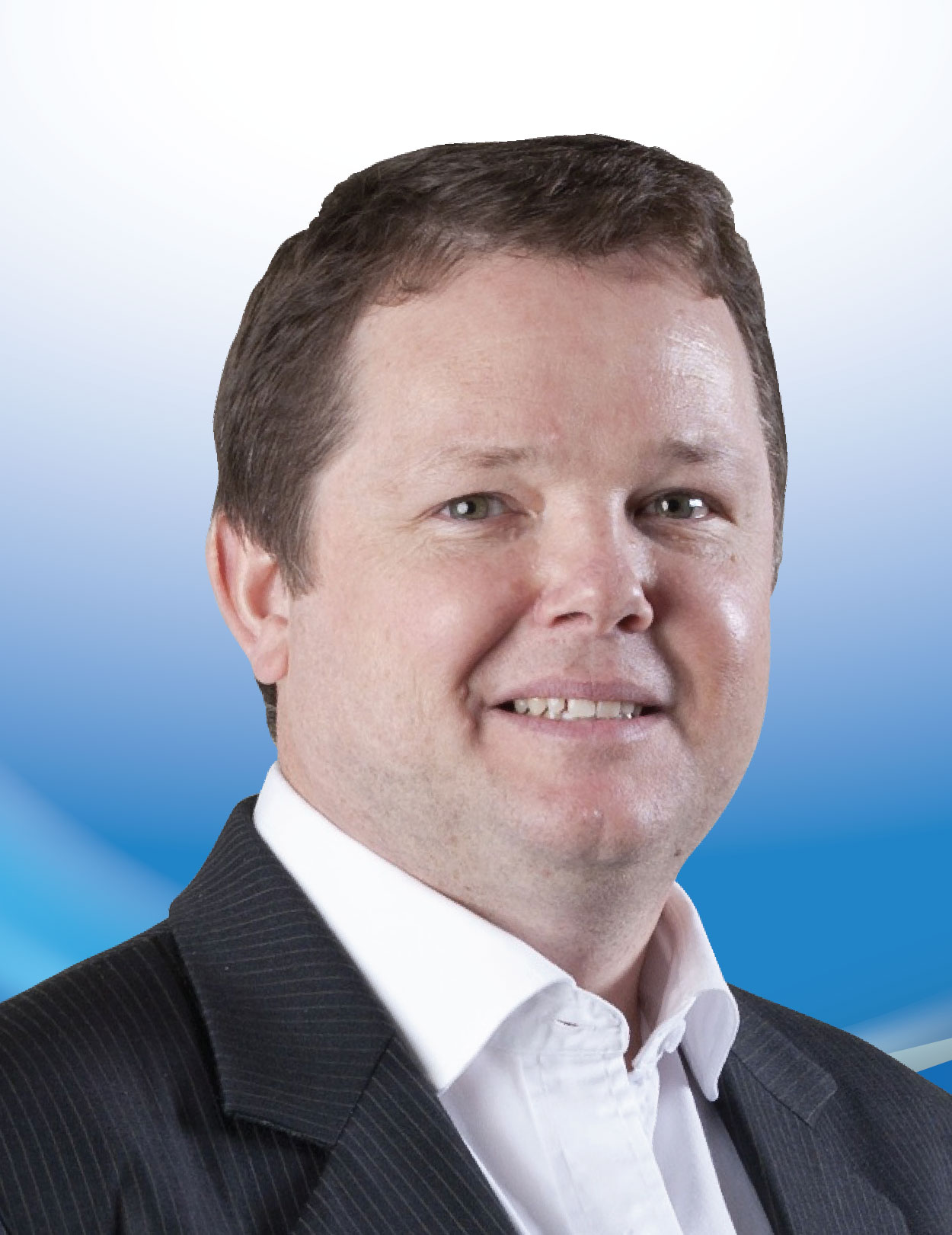
Mr Wyeth graduated from Portsmouth University in 1991 with a Master of Engineering Degree in Civil Engineering.
He has 30 years experience in the water industry, with 26 of those years whilst working in South-East Asia. During this period Mr Wyeth has gained member status of the CIWEM (UK), is a Chartered Engineer, has gained a Graduate Diploma in International Operational Management and is the current Secretary of the IWA Water Loss Specialist Group
Mr Wyeth Started his career as a network modeling engineer for Biwater International and through this built up an expertise in how water supply systems operate. He then moved into NRW management, with Thames Water International and Ranhill Water Systems, gaining further expertise in leakage control, DMZ design & implementation, system monitoring, customer metering and production metering.
He also established the APAC regional office for i2O Water, specialists in advanced pressure management, where he was APAC managing director for 4 years. He further improved his experience of pressure management whilst managing the regional office for Singer Valves, a manufacturer of pressure control valves.
He is currently the Managing Director of Wyeth Water Consultants a Malaysian based NRW Management Company.
Carbon Intensity and How it Affects Management of Carbon Emissions
Importance of Reducing Carbon Emissions and how it relates to Real Loss
Interest in carbon reduction to combat climate change has been growing rapidly since the mid 2000’s. In 2015, the Paris Accords were established to influence a societal change to a carbon neutral future. The Paris Accords specifically seek to limit the mean rise in global temperatures to below 2 degrees Celsius above pre-industrial levels, among other stated measures intended to benefit humanity in combatting climate change. These Accords are responsible for numerous policies and legislation enacted by the European Union and 193 other signatory member states to align financial incentives with a greener future. The financial incentives aim to inspire breakthroughs in technology for production of greener energy and/or direct reduction of carbon emitting practices. Reduction of carbon-emitting practices that accompany the production of useful items and services is as critical to carbon neutrality as production of greener and more sustainable energy.
Real Loss (leakage) is generally defined by the International Water Association (IWA) as leakage resulting from failed distribution system infrastructure. Unmanaged leakage is a problem that is already being addressed by various global entities. However, the carbon impact of that leakage has not been definitively established. Every unit of water distributed by a utility, results in the production of a certain amount of greenhouse gas emissions (carbon cost) due to the energy expended in the extraction, treatment, pumping and distribution of that unit of water. These emissions are known as Scope 2 emissions, which are indirect emissions an entity is responsible for as a result of purchasing carbon intensive electricity used in an entity’s operations. Every unit of water lost to leakage results in carbon emissions that would otherwise be avoided if such leakage were reduced. In general, it is not economically viable for a utility to eliminate 100% of its leakage. However, utilities can, and should, strive to achieve the technical minimum that is possible. Excessive leakage provides no benefit for the utility or its customers and therefore, carbon emitted in the process is unnecessary. It can also be reasoned that for those utilities with renewable energy sources, excessive leakage represents a waste that could be otherwise used to further offset carbon-emitting energy sources.
Water Balance
Understanding a utility’s carbon footprint requires an understanding of the core concepts of a utility’s water balance. The Water Balance is a term used to describe the complete input and end use of drinking water within a utility. The Standard Water Balance was the result of an analysis by the IWA Water Loss Task Force and the Performance Indicators Task Force of various best practices from multiple countries, with the original version published in 20002. The Standard Water Balance has further evolved since that time and is now utilized across the world by utilities, technical organizations, consultants, regulators, and international funding agencies. It is critical to understand the Standard Water Balance when trying to quantify a utility’s resulting Carbon Balance. The Standard Water Balance establishes a volume for all sources, uses, and losses, quantified from a utility’s own specific data. The Carbon Balance aims to quantify the amount of carbon attributed to each of those same sources, uses, and losses (including leakage) for a given utility.
Real Losses (Leakage)
Real Loss generally represents the amount of water that is lost by utilities due to physical leaks. This leakage is quantified within the Standard Water Balance. Portions of this leakage can be reduced or avoided entirely by proper pressure management and renewing or repairing existing infrastructure. While this paper seeks to quantify and reduce the carbon emissions component of leakage, the end result will also deliver benefits in the form of supply-side water conservation through reduced leakage, increased availability and reduced production costs. Utilities should already be doing what they can to reduce leakage. However, additional emphasis is needed for finding, funding, and repairing infrastructure to reduce leakage long term. Many utilities enact only temporary mitigative measures to control leakage, and some may not manage leakage at all if they do not have the resources available. In most cases, existing excessive leakage levels are a direct result of a limitation of resources available to implement leakage reduction strategies.
Energy Intensity
Energy intensity is defined as the amount of energy used to produce a given level of output. In the context of drinking water systems, energy intensity is the amount of energy it takes to extract, treat, and deliver water. Depending on where water is sourced from, a utility may use more or less energy in the scope of such extraction, treatment, and distribution. Some utilities may be able to deliver water with minimal energy input s thanks to a variety of factors such as gravity delivery, reduced treatment needs, and minimal head losses in the pipes. Other utilities may have vast amounts of energy usage due to intense pumping requirements, poor source water quality, high head losses, and/or desalination. Excessive leakage can lead to over-sized infrastructure. The combination of these factors establishes a utility’s energy intensity.
Carbon Intensity
Carbon Intensity is the variable by which the carbon cleanliness of a utility is measured. A utility will use energy from a specific source or combination of sources in the extraction, treatment, and distribution of water. The carbon emissions associated with that energy can be measured by determining the electricity production source that a utility’s power company uses. A large majority of power companies will use a mix of several different production sources such as coal, gas, and renewables. When the energy carbon emissions variable is determined, it can be linked to the amount of energy used by the utility. This yields an amount of carbon emissions per unit of water which can then be applied to each component in the Standard Water Balance, including leakage.
Calculated Total Carbon Emissions in Tons
Carbon markets have existed as far back as the early 2000s and the vast majority of carbon avoidance and reductio n projects measure their effectiveness in tons of carbon saved. Companies seeking to achieve carbon neutrality likewise measure their total emissions in tons of carbon. As such, it is most effective for the Carbon Balance to measure carbon emissions for a utility’s operations in tons of CO₂ equivalent.
Targeted Reduction of Carbon Emissions in Tons
The goal of carbon avoidance from leakage reduction is naturally linked to the existing leakage level. An initial Carbon Balance study is required to determine the baseline level of leakage from which a utility will seek to reduce its leakage and hence the carbon emissions associated with it.
In most cases utilities are not capable of eliminating 100% of their leakage. Even the smallest of utilities can have hundreds of kilometres (or miles) of infrastructure that make it uneconomical to detect and repair every leak. Ideally, most utilities should target an economically feasible target level of leakage. This targeted leakage reduction amount will be multiplied by the carbon intensity of a utility’s unit water to calculate a targeted level of carbon reduction. By forecasting an amount of carbon reduction over a number of years, a project can also seek financing for improvements with the promise of reducing carbon emissions over a specific timeframe.
At the outset of the project, a Water and Carbon Balance could be defined for each year to quantify the benefits. Environmental attribute s could then be generated according to leakage emissions reduction and transacted to generate revenue for the project funder, be it the utility or a third party.
Calculated Carbon Emissions per Unit of Water
When carbon intensity of energy usage is determined, a utility can then calculate approximately what amount of carbon is being emitted per unit of water delivered. This Carbon Intensity Value can then be multiplied by the amount of water attributed to every element within the carbon balance. This will allow a utility to understand exactly how much carbon they are emitting across their entire water supply chain.
Financial Incentives for Reduction of Leakage Based Carbon
At the time of publishing, there does not exist a cap-and-trade or other similar market structure to incentivize investment in leakage emissions reduction. What follows is contemplation of a framework for such a market structure.
Validation and Verification of Carbon Reduction
Verification bodies who would audit registered projects in accordance with a specific protocol to ensure that they are properly generating any environmental attributes.
Registering Carbon Leakage projects would be a critical step to building credibility for any type of leakage emissions protocol, providing a mechanism to verify the leakage emissions reductions. The value of any environmental attributes associated with leakage emissions reductions would therefore be directly tied to the validation of said reductions.
Carbon Leakage Credits
Carbon Leakage Credits (CLCs) could be environmental attributes that are generated each year when a utility reduces their leakage below the initially set benchmark. When these credits are generated in accordance with a protocol, they could then be sold to corporate organizations who may apply them to offset their own carbon emissions. A project could forecast a target level of leakage reduction to seek financing for improvements needed to achieve said reduction. Each CLC would represent one ton of carbon avoided by a utility reducing its leakage below its benchmark leakage level. When the initial leakage benchmark is set, a carbon balance is conducted each year to measure how effective a utility’s improvement efforts were. As more leakage is reduced below the benchmark, more credits are generated. The implementation of CLCs are intended to incentivize aggressive reduction of leakage by utilities. These credits may be warranted when current efforts to curtail leakage are hindered by financial difficulties, and the leakage emissions would likely continue without further financial incentive. These credits could also represent a quantifiable amount of water conservation that would likely have not been achieved without the implementation of such a program. Conservation of drinking water supplies has been a growing issue worldwide. CLCs could be the only credit that represents reduction of both carbon emissions and water usage.
Promote Outside Corporate Investment on a Community Level
The representative reduction of carbon through generation of environmental attributes is a model that has been in place for decades. This has enabled the implementation of carbon reduction projects that likely would not have existed without a supplemental revenue stream. Corporate entities engaged with the Leakage Emissions Protocol could then identify and work with local utilities to help them reduce their leakage, thereby positively impacting a specific community by promoting both carbon reduction and water conservation.
The water utility industry itself has sufficient awareness of the importance of managing real loss. However this is rarely connected to the environmental impact of consuming energy to produce water which is then lost before it reaches the customer. Because of this, funding for continued improvement of real loss management is getting harder to come by whereas that for reducing carbon emissions has seen an explosion over the past two decades.
Consumers are much more likely to be influenced by the carbon impact that their purchasing choices have. Although water conservation is certainly due the same influence and awareness, the reality is that more information on the overall impact that real loss has should be shared. This additional awareness can help influence outside corporate investment for long term sustained improvements to infrastructure and technology upgrades that can encourage water utilities to improve their operations and make step to achieve carbon neutrality. Outside investment can also assist to individually improve specific communities who are underfunded or disadvantaged. Investors benefit by building local goodwill, generating positive public relations, and being able to retire environmental attributes that will offset their own carbon emissions and water usage. This initiative may also pave the way for a water specific environmental market that operates off of water conservation demand alone.
Real loss is an unnecessary drain on valuable resources that could be responsibly consumed elsewhere. It would have been ideal to eliminate real loss entirely if it were physically and economically feasible. Since in most cases it is not, it is necessary to find a balance of sustainable leakage that can be eliminated. The implementation of a Carbon Balanceas part of the Standard Water Balance will help to influence applying protocols and generation of environmental attributes that will help strengthen the economic feasibility of finding and repairing more leakage. The end result is a newfound urgency and action to assist utilities and society as they continue to strive for environmental sustainability.
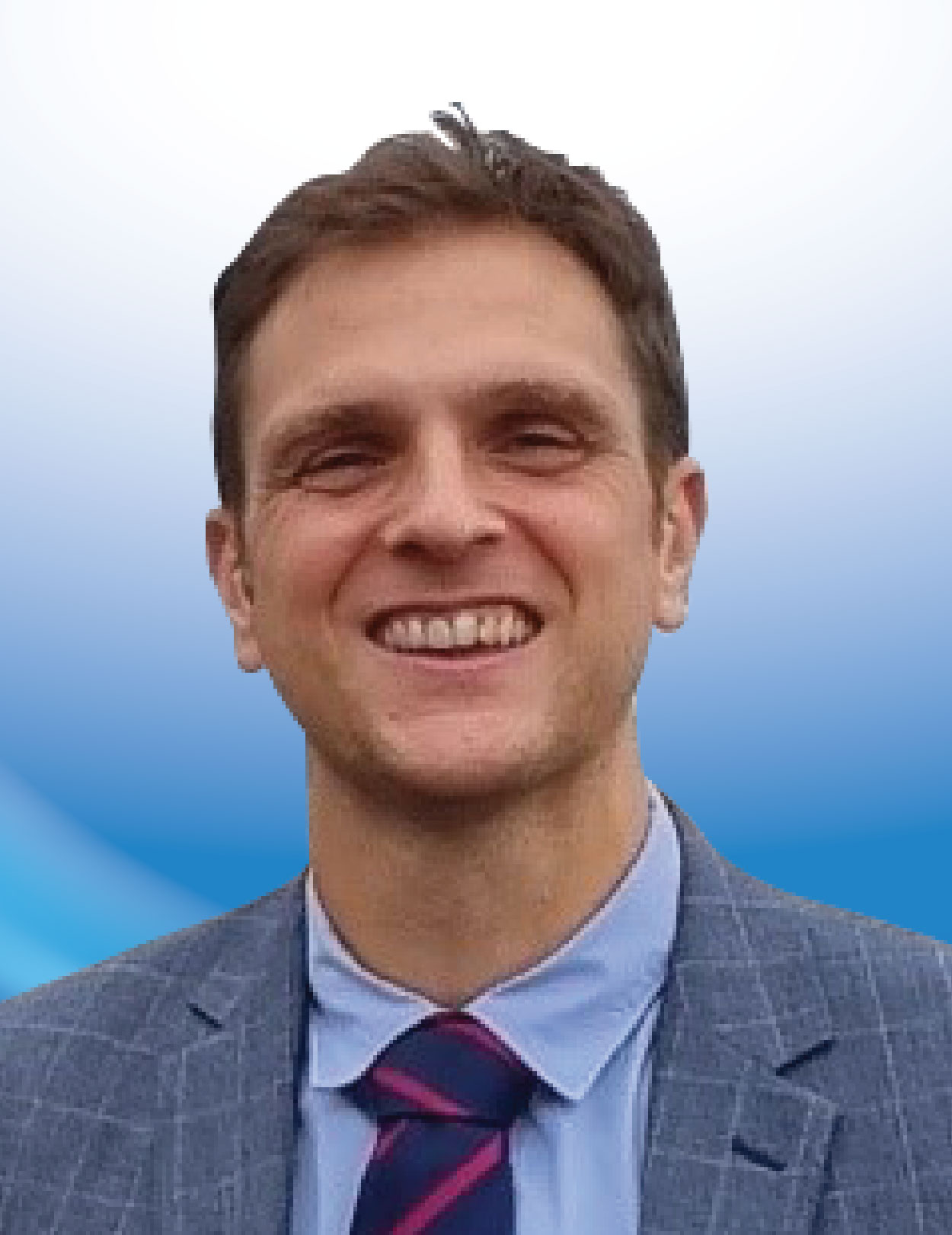
Tom is a Chartered Manager with a strong technical understanding of water networks and high level of expertise in water loss management. He is a Director of Crowder Consulting, having worked full time for the company for 24 years.
In his director role, he is actively involved in developing new streams of work and building specialist service delivery teams. He is responsible for leading water loss consultancy projects, Netbase digital services projects, and leakage detection projects.
Tom is responsible for a multi-skilled specialist team delivering a range of water loss related services. He ensures that the team apply a very high standard of work and innovative approach that utilises cutting-edge technology.
Most recently, Tom has been helping to deliver NetAlytics our latest DMA targeting software, and NetOps our latest leakage detection management software across several clients.
Making Consumptions Dynamic & Water Balance Smarter
Many water utilities are rolling out smart meters with intra-day reading intervals to better understand demand in their water network. The benefits include helping customers to use less water, being able to quickly identify customer-side leaks and improving the accuracy of network leakage estimations.
As the coverage of smart meter data increases, so too do the range of analyses that can be applied to make the water balance smarter, e.g. smart meter consumptions and night use aggregated up to different area levels, as well as specific cohorts to simulate demand. This provides totalised area consumptions and customer side leakage, as well as intra-day demand profiles that can feed into the water balance analysis. The general idea of the smart water balance is to derive more representative consumption estimates, leveraging the smart meter data, the cohort analysis results of the smart meter data, as well as dynamic pressure adjustments.
Some key smart meter questions that need to be explored:
• What is the required level of smart metering to improve the accuracy of the water balance?
• What is the required frequency of data capture and retrieval to separate customer side leakage from network leakage?
Assuming these questions can be answered and the output from a cohort analysis can be confidently applied to simulate consumptions, the fundamental question remains: does the water balance continue to be a daily flow and night flow analysis, or do we move towards a mass balance using hourly/15min data?
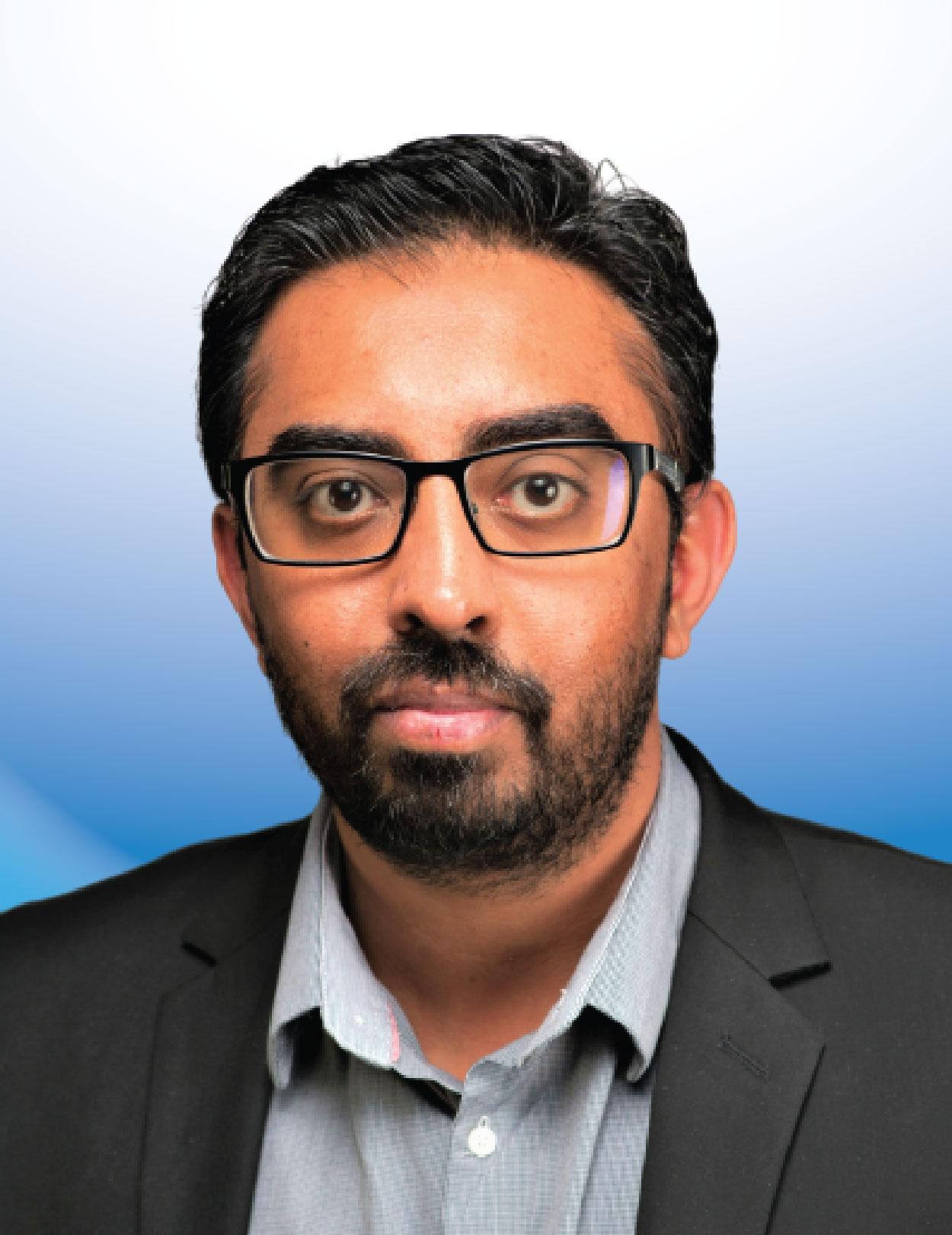
Keshvinder Singh has dedicated 16 years to the water industry, accumulating extensive experience with major water utilities and technology firms.
He started in Air Selangor, Malaysia, where he was involved in the hydraulic modeling and water loss departments. In 2016, he relocated to Saudi Arabia to join Marafiq-Saur, a joint venture between Saudi Arabia’s Marafiq and France’s Saur, overseeing the water supply operations for Yanbu Industrial City.
In 2017, Keshvinder transitioned to Singapore, taking on the role of Consultant Project Delivery at AVEVA, before moving to Schneider Electric as a Consultant for Smart Water solutions in 2021.
Holding a Master’s degree in water engineering, Keshvinder currently leads Schneider Electric’s smart water initiatives, focusing on business development, pre-sales, project delivery, and after-sales support. He collaborates with water utilities to optimize return on investment through innovative smart water solutions. Additionally, Keshvinder chaired the APAC Research Group for SWAN Forum from 2017 to 2020 and is an active member of IWA, SWA, and MWA.
Best Practices in Water Loss Management – For Improved Visibility and Reduced NRW
Water loss is the difference between system input volume and authorized consumption, consisting of apparent and real losses.
Figure 1 shows the water loss management lifecycle that is developed from the rich experience gathered over the years by observing the industry practices. The diagram can be divided into two broad groups of OPEX and CAPEX investments that make up the overall lifecycle.
Expanding on the above lifecycle, the above processes can be further detailed in a stepwise approach as shown below to better manage the leaks in the water network in a sustainable manner:
– OPEX Cycle: preliminary identification of leaks and their confirmation by running thru multiple analyses such as top-down and bottom-up calculations; prioritization and scheduling of ALC activities; issuing work orders; Supervising ALC activities and Leak Repair Jobs; Reviewing zone behavior post repair jobs
– CAPEX Cycle: planning of New Pressure Management Zones and choosing the best zones based on investment ROI
By using a big data platform for near real-time NRW calculations and management, a few of the salient benefits that can be achieved are:
• Single version of truth for the whole organization.
• A new, integrated solution built on existing data and IT for sharing information across the entire organization
• Quicker leaks and events detection by using AI improving response times and reducing leakage flows
• Reduction of costs of outsourced leak detection and repair works
• Assisting in prioritizing DMA for leak detection
• A drastically reduced leakage calculation and reporting times
• Achieving net zero goals

Marcus is an engineer with a Master’s degree in Environmental Engineering from Austin, Texas. He specializes in water and wastewater treatment processes and distribution/collection systems. He has engineering design experience where he worked on several water and wastewater projects across Texas. Coupled with a lifelong dedication in the water/wastewater industry, he also has more than 20 years’ experience in exploring better solutions to solving NRW. At Kamstrup, Marcus helps utilities in developing viable strategies to adopt smart metering technology along with mastering the use of data to achieve NRW reduction goals.
Enlightenment by leak detecting smart meters
A water utility’s first steps into smart metering is typically built upon very basic expectations which is the root cause of unfruitful smart meter pilots. Kamstrup have recently deployed smart meters in several utilities in South East Asia and have brought enlightenment of the holistic benefits of a truly smart water meter. In this presentation, Kamstrup will share its experience in leak reduction, billing revenue protection, theft monitoring, and deployment of a superior radio technology.
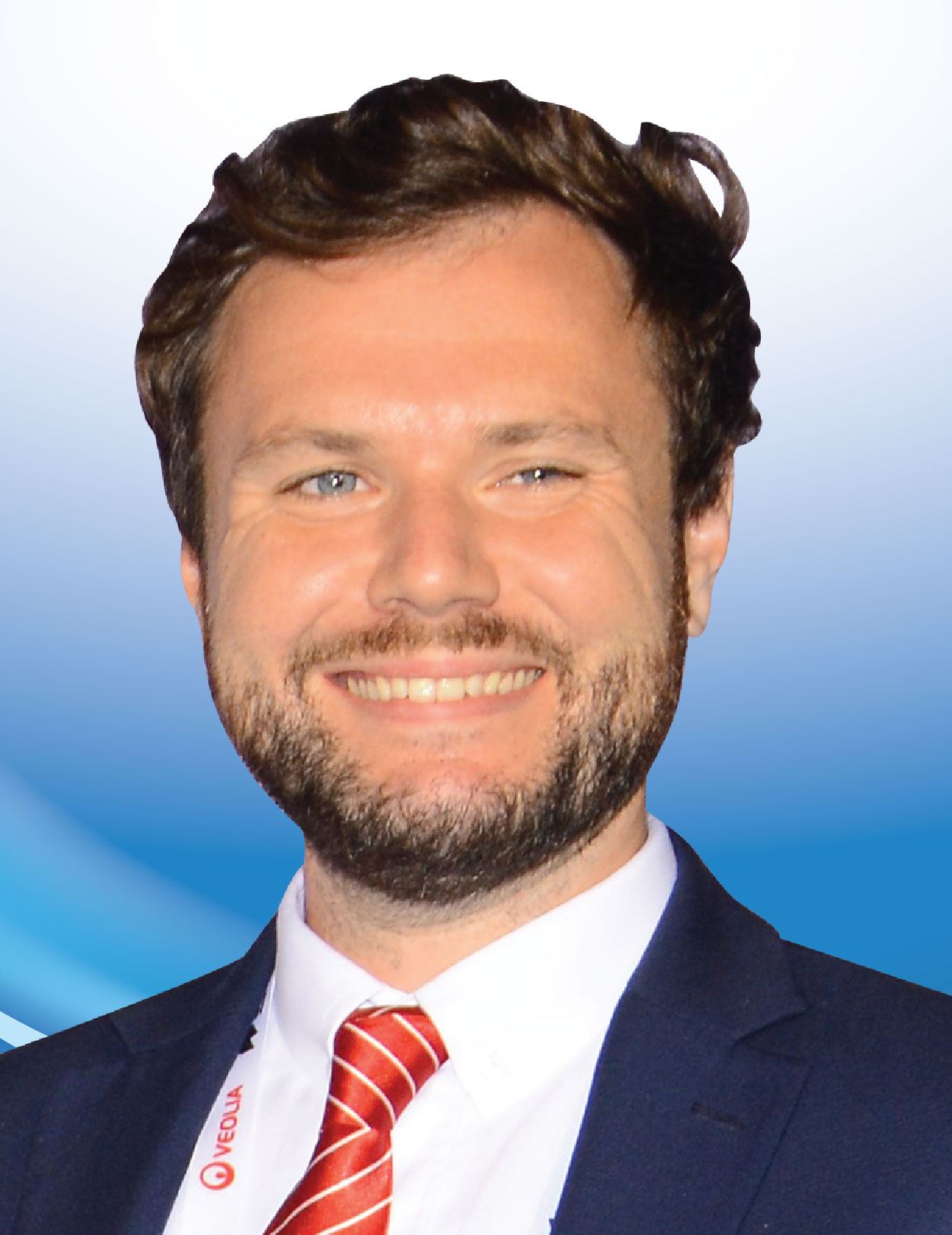
Thomas Allen is a digital water leader with over a decade of experience delivering innovative solutions to the water industry. With a specialist background in smart water metering, Thomas began his career in the UK, overseeing data and operations for the country’s first large-scale smart metering project. This involved managing and analysing data from over 400,000 connected smart meters, laying the groundwork for a deployment that has since surpassed 1 million meters. Thomas then relocated to Singapore to lead the nation’s AMI demonstration project, which involved over 300,000 AMI water meters. He currently heads the RSK Digital Water team, providing strategic support to Hong Kong’s smart metering programme.
With hundreds of options on how, what, and where to deploy smart water meters, how do utilities find the right combination for success, regardless of whether they’ve started or not?
This session provides insights into a metering playbook designed to help water utilities navigate the complexities of adopting smart technologies. Key decisions revolve around selecting the right meter type to ensure accurate and long-lasting performance, communication protocols to ensure optimal connectivity, and defining the project’s benefit focus.
Equally important is data handling: balancing the volume and frequency of data collected, integration with existing systems, and implementing robust cybersecurity measures to protect sensitive information. This all hinges on correctly defining the desired outcomes from the start. Should smart metering aim to enhance leak detection, improve operational efficiency, or drive customer engagement? Why not achieve all three?
An interactive portion will demonstrate how smart metering data can be utilised for real-time water balance calculations, showing its potential to pinpoint losses and optimise water management strategies. Participants will engage with data scenarios to explore how smart meters contribute to reducing non-revenue water.
By the end of this session, participants will have a clear framework to make informed decisions and drive successful smart metering implementations tailored to their specific needs.
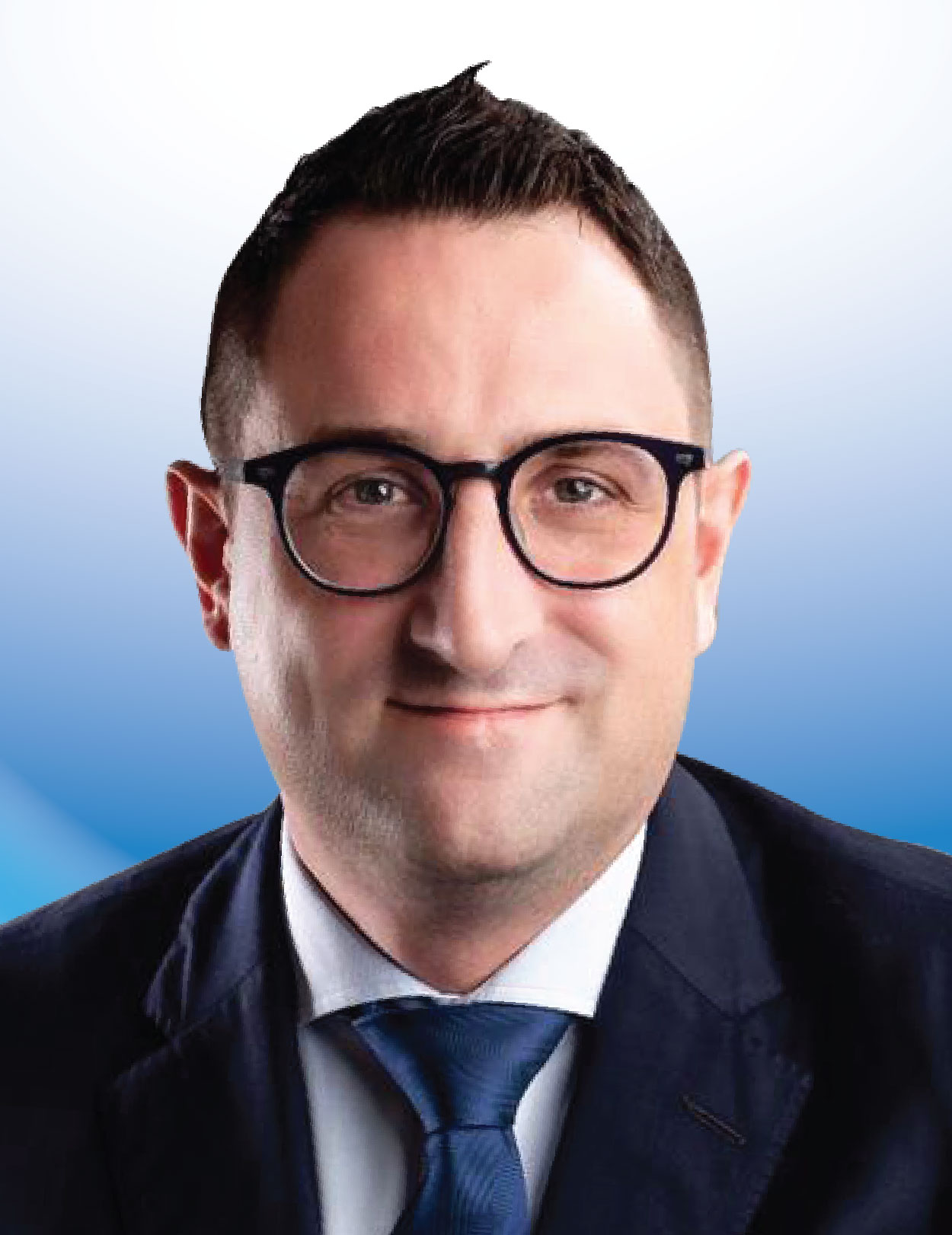
Mark has 22-years of experience in the water industry, crossing multiple geographies, cultures, and levels of development. Having worked as a Network Engineer for Thames Water in the UK, Mark relocated to Malaysia in 2007 to join Ranhill Water Services as Network Modelling Manager, where he was responsible for establishing and leading the modelling department and delivering projects in Malaysia, India and Indonesia.
In 2011 Mark joined Mueller Water Products to lead the expansion of the recently acquired Echologics, initially in the Asia Pacific region and later also in the European and Latin American regions
In September 2023 Mark established Nicol Consulting Services which provides bespoke consulting services to connect innovative technology companies with end clients in the Asia Pacific region.
Mark has a BSc in Geography and a MSc in Surface Water Modelling and Management from the University of Reading, and an Executive MBA from Henley Business School.
This session follows on from the previous session and delves deeper into the direct and indirect benefits of remote monitoring in addressing both Non-Revenue Water (NRW) and lowering carbon emissions. According to estimates, the water sector as a whole accounts for ~4% of the world’s total electricity consumption, and is a significant contributor to climate change, producing approximately 1.2 billion tons of CO2 annually.
Remote monitoring technologies, which integrate advanced sensors, data analytics, and “real-time” communication, present an innovative solution to these challenges. Technological advancements have significantly reduced the cost of sensors, data transmission, and analytics, enabling the cost-effective deployment of remote monitoring systems in water networks. Permanent deployment of sensors on water networks has numerous benefits, including faster leak detection & pinpointing, identification and isolation of pressure transients, optimisation of pressure management schemes, and improved metering accuracy, resulting in significant reductions in NRW.
Additionally, remote monitoring provides valuable insights into the condition of water assets, helping utilities assess infrastructure health more accurately. This enables proactive asset management, where maintenance and pipe replacement can be prioritised based on data-driven assessments, reducing the risk of major failures and extending the lifespan of critical infrastructure.
In addition to minimizing water losses, remote monitoring also offers substantial environmental benefits. Early leak detection & repair reduces the energy required for water treatment and pumping, while the reduction in physical site inspections curbs vehicle emissions. By improving overall water management efficiency, these technologies contribute to lowering energy consumption, supporting efforts to reduce carbon footprints.
This paper will provide real-world examples of how remote monitoring systems have directly contributed to reducing NRW and CO2 emissions, highlighting its role as a critical tool for water conservation, operational efficiency, and environmental sustainability.
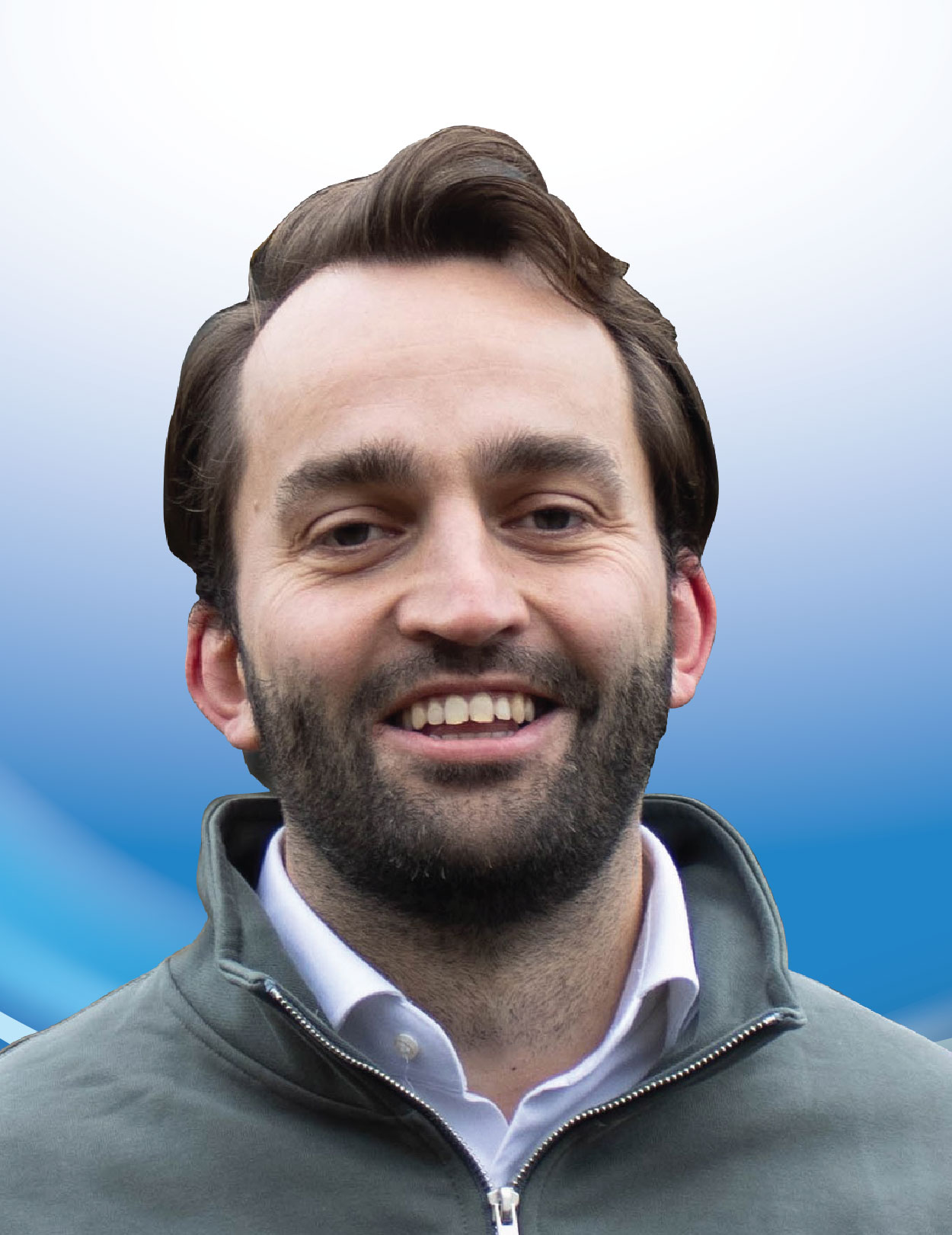
Frank van der Hulst is a seasoned expert in robotics and machine learning, with a career spanning over a decade. For the past eight years, he has been transforming the water industry, leading advancements in sensor technology and machine learning to extract actionable insights. Frank has also been instrumental in developing robots designed for water pipeline inspections and asset management, showcasing his commitment to improving infrastructure resilience. As a leader in the sector, he has consistently demonstrated how innovative technologies can drive value, particularly in leak detection and network management. Now the co-founder and CTO of HULO, Frank leads a cutting-edge startup that develops advanced analytics software for water utilities. His work empowers utilities to make data-driven decisions, optimising operations and enhancing the sustainability of water management. Frank’s contributions are vital to the future of water resource management, blending technology and environmental stewardship.
At this workshop, HULO and Techimex will showcase an innovative, collaborative approach to combating water loss. HULO specialises in continuous monitoring of all utility sensors to provide real-time insights and accurate leak localisation within water distribution networks. Once leaks are identified, Techimex steps in with advanced ground microphones and other equipment to pinpoint the leak locations precisely.
In addition to leak detection, Techimex and HULO will address leak prevention strategies, such as pressure management. By maintaining real-time operational oversight, HULO enables a proactive approach to managing network performance, ensuring the long-term health of the infrastructure and significantly reducing future water losses. This proven Dutch approach results in high reduction of NRW. Our combined expertise offers a comprehensive solution that addresses both the detection and prevention of leaks, moving towards a more sustainable management of water resources.
Technimex offers a solution to drastically reduce the NRW with real time pressure management. Understanding the hydraulic model of the DMA’s or City allows us to anticipate on peak loads of the water network, recognize pipe breaks , recognize water consumption and water leakage , active pump and valve control.
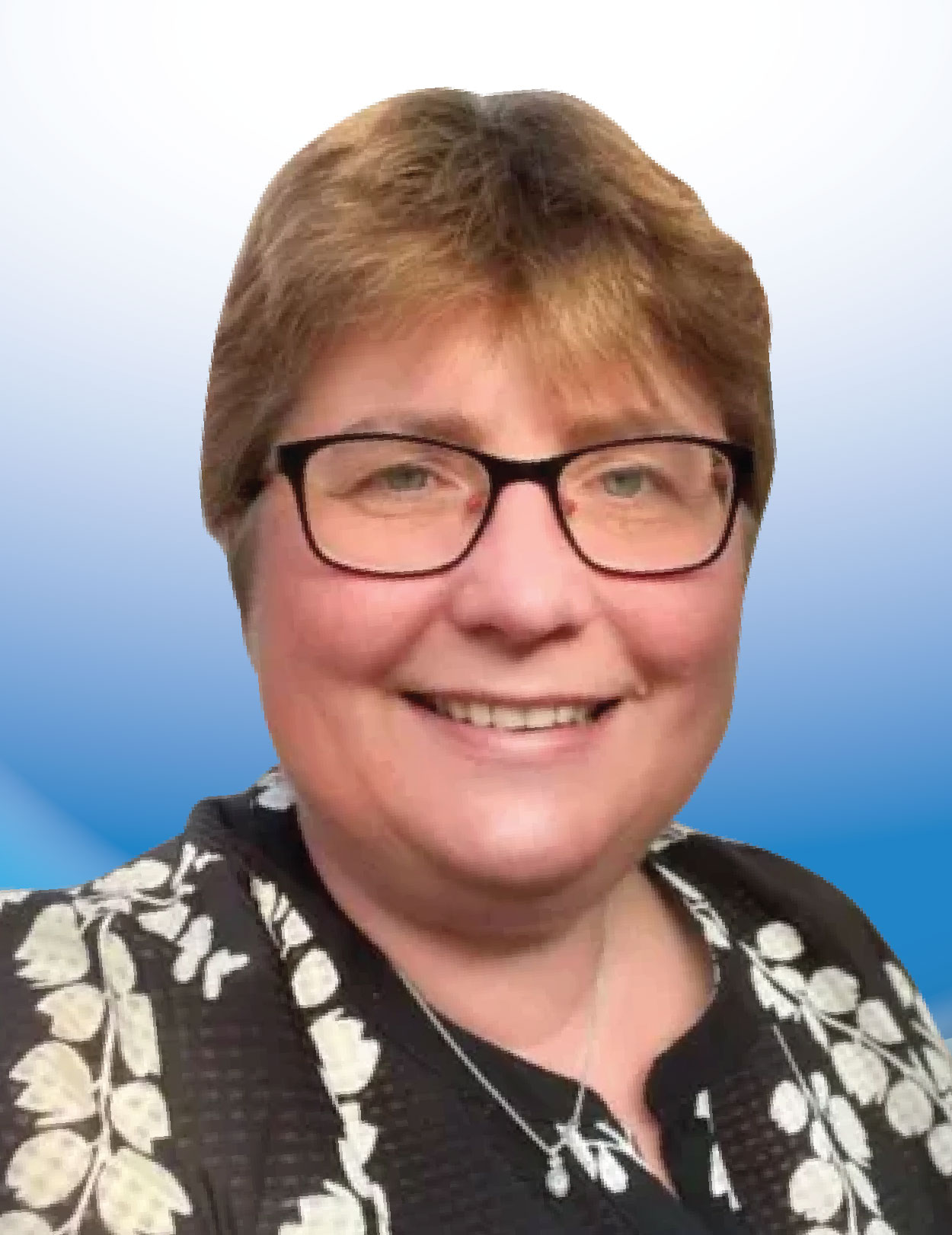
Gillian is a Chartered Civil Engineer graduating from Liverpool University in 1996 with a master’s degree in civil and Structural Engineering. She has 28 years’ experience in the water industry and has a broad range of technical knowledge in both clean water and wastewater sectors. She is a Chartered Engineer and Chartered Water and Environmental Manager CIWEM (UK).
As a Company Director at Crowder Consulting based in the United Kingdom she has actively involved in the development of technical solutions, Netbase software implementation and upgrade projects in Malaysia, Jamaica, Bahamas, and several Water Companies in the UK.
Working on engineering projects worldwide Gillian has developed knowledge on International Water Balance, NRW, metering, asset management, pipe rehabilitation, hydraulic modelling, and water management. She also has an extensive knowledge of corporate systems including Billing, GIS, Work and Asset Management, Scada and Telemetry systems working with experts to understand how the data can be used in Netbase for water management and offering advice in data cleansing and collection to provide enhanced analysis.
Making Consumptions Dynamic & Water Balance Smarter
Many water utilities are rolling out smart meters with intra-day reading intervals to better understand demand in their water network. The benefits include helping customers to use less water, being able to quickly identify customer-side leaks and improving the accuracy of network leakage estimations.
As the coverage of smart meter data increases, so too do the range of analyses that can be applied to make the water balance smarter, e.g. smart meter consumptions and night use aggregated up to different area levels, as well as specific cohorts to simulate demand. This provides totalised area consumptions and customer side leakage, as well as intra-day demand profiles that can feed into the water balance analysis. The general idea of the smart water balance is to derive more representative consumption estimates, leveraging the smart meter data, the cohort analysis results of the smart meter data, as well as dynamic pressure adjustments.
Some key smart meter questions that need to be explored:
• What is the required level of smart metering to improve the accuracy of the water balance?
• What is the required frequency of data capture and retrieval to separate customer side leakage from network leakage?
Assuming these questions can be answered and the output from a cohort analysis can be confidently applied to simulate consumptions, the fundamental question remains: does the water balance continue to be a daily flow and night flow analysis, or do we move towards a mass balance using hourly/15min data?
| Day 3 Workshop: 21 November 2024 (Thursday) | |
|---|---|
| 08:00-08:45 | Registration |
| 08:45-09:00 | Welcome Address and Introduction |
| 09:00-10:00 | Carbon Intensity and How it Affects Management of Carbon Emissions Gary Wyeth, Secretary, IWA Water Loss Specialist Group Wyeth Water Consultants |
| 10:00-11:00 | The Benefits of Remote Monitoring in Reducing NRW and Carbon Emissions Mark Nicol, Director, Nicol Consulting Services Pte Ltd |
| 11:00-11:10 | 10 mins Break |
| 11:10 – 12:10 | Navigating Your Next Smart Metering Step Thomas Allen, Head of Digital Water, RSK Digital Water |
| 12:10-13:10 | Enlightenment by Leak Detecting Smart Meters Marcus Chang, Sales Director APAC & Country Manager Malaysia, Kamstrup |
| 13:10-14:00 | Lunch Break |
| 14:00-15:00 | Making Consumptions Dynamic & the Water Balance Smarter Tom Crowder, Director, Crowder Consulting Gillian Sowden, Director, Crowder Consulting |
| 15:00-16:00 | Best Practices in Water Loss Management – For Improved Visibility and Reduced NRW Keshvinder Singh, Consultant Smart Water, Schneider Electric |
| 16:00-16:10 | 10 mins Break |
| 16:10 – 17:10 | Integrated Solutions for Sustainable Water Loss Reduction: Real-Time Leak Detection and Prevention with Techimex & HULO (a Dutch Collaboration) Frank van der Hulst, Co-founder & Chief Technology Office, HULO |
| 17:10-17:30 | Q&A Session |
| 17:30 | End of Workshop – Day 3 |
*Programme is subject to change.
Asian Perspectives on Water Loss Management and Carbon Reduction
